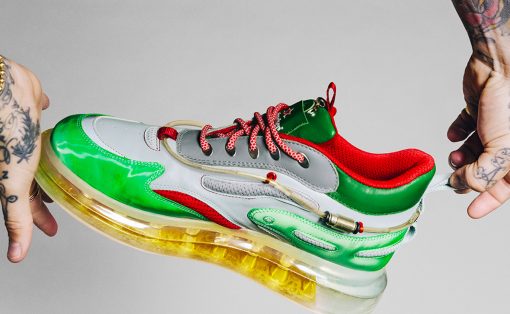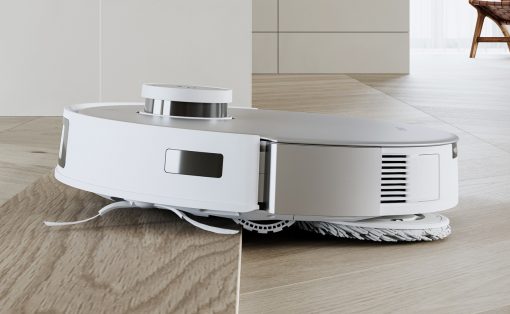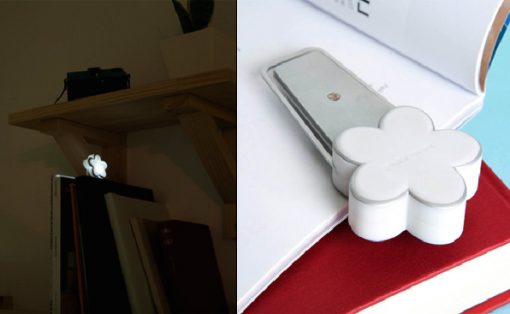
With one in eight individuals globally aged over 60, it’s important to design products that specifically cater to our elderly population. As most senior citizens are healthy, active, and financially stable, they are expected to represent around 20% of the global population by 2050. Explore these guidelines for developing inclusive products, considering diverse user needs, especially those of the elderly.
Image courtesy of: oneinchpunchphotos
1. Simple Design
Simplicity in design is crucial, especially for senior-centric products. Complexity and confusing features should be avoided at all costs. Interfaces should be kept simple to minimize confusion, with easily readable and clear fonts enhancing the overall user experience. Moreover, it’s imperative to provide clear instructions to ensure they can easily comprehend how to use the product correctly.


Designer: Piaggio Fast Forward
Gita, a robot, acts as a loyal companion and practical aid, especially for seniors. It eases the burden of carrying heavy items, making grocery trips and errands more manageable. Its ability to provide a seating option offers rest during walks, promoting outdoor mobility and encouraging seniors to stay active. With its user-friendly design and approachable appearance, Gita fosters a sense of independence and companionship for the elderly, supporting their well-being and enhancing their quality of life.
2. Health Monitoring
Advancements in technology offer the essential security and assistance required for senior citizens living independently. As many seniors deal with chronic health conditions that necessitate regular monitoring, product design has advanced. Through wearable devices and smartphone technology, vital parameters can now be tracked, facilitating health management and providing respite to caregivers, thereby ensuring peace of mind.



Designer: Studio Fantasio
These three smart devices cater to seniors’ needs, offering medication reminders, comfortable reading, and easy communication. Familia aims to restore dignity and confidence to the elderly with its minimalist design and user-friendly interface. The smart clock dispenses medication with a playful cuckoo bird reminder, the lamp doubles as an illuminated magnifying glass, and the digital mirror serves as a communication tool and family photo frame. While designed for seniors, these objects promote inclusivity and reduce stigma around aging challenges by appealing to users of all ages.

Designer: Mati Papalini and Marko Filipic
Nobi, an AI-powered ceiling light, enhances elderly lives by monitoring safety, detecting, predicting, and preventing incidents like falls or respiratory issues. Its user-friendly design seamlessly blends into interiors, encouraging the adoption of high-tech care technology. Nobi serves as a vigilant companion, continuously monitoring the environment to identify potential hazards and alert designated caregivers when needed. It can detect respiratory issues, and coughs, and even predict falls before they happen, ensuring timely assistance and intervention. With Nobi, seniors feel safe and supported, leading dignified lives with continuous assistance.
3. Ergonomic Design
Designing products with ergonomic features is crucial to reduce strain, particularly for seniors. For instance, opt for ergonomic seating, like high-backed chairs with lumbar support, ensuring firm and comfortable cushioning to maintain healthy posture. Prioritize ease of use and comfort, as seniors may have reduced strength while avoiding low seating and armrest-less chairs.


Designers: Hanyoung Lee, Haejun Park, Seongmin Ha, Jun Hong, Soyeon Park, Hyunsub Shin
This luxurious chaise lounge cleverly conceals a motorized wheelchair, offering comfort and elegance to those with mobility issues. Resilience, with its sleek design and smart materials like Resilient gray and Classy chrome, symbolizes independence and confidence for the elderly. It’s part of a larger mobility system, including the self-driving “Brio” vehicle, seamlessly integrating style and functionality for indoor and outdoor use.
4. Extended Battery Life

Image courtesy of: YuriArcursPeopleimages
When designing devices that require charging, it’s crucial to prioritize either long battery life or easy recharging to minimize the frequency of charging or battery replacement for seniors. This proves beneficial for seniors experiencing mobility challenges and memory impairment.
5. Added Safety Features
Inclusive product design often incorporates added safety measures, such as non-slip surfaces, automatic shut-off mechanisms, and appropriate emergency buttons, to enhance overall product value. These small yet critical features serve multifunctional roles, particularly benefiting seniors.
6. Durable Materials
When catering to the needs of senior citizens, selecting durable materials that withstand breakage from falls or accidents is crucial. Given that seniors may use products more frequently or with greater force due to age-related changes, opting for durable materials ensures the product will withstand prolonged use and maintain its integrity over time.


Designer: Sarah Hossli
The T’ROI chair, developed in collaboration with a retirement home in Basel, Switzerland, addresses the challenge of sitting and standing for the elderly. Featuring extended arms, it provides support for individuals to sit and rise without assistance, promoting independence and dignity. Sturdy materials ensure safety, while its comfort enhances the overall experience for users.
7. Enhance Comfort of Usage

Image courtesy of: prostooleh
When designing products, prioritize comfort by considering aspects like cushioning, grip, and weight distribution. Ensure ease of use with a manageable weight, ergonomic grip, and slip-resistant design, promoting inclusivity. Proper cushioning enhances the comfort level and overall user experience.
8. Integration of Assistive Technology
When designing specifically for seniors, integrating assistive technologies such as voice control or magnification features enhances usability, making products more accessible to this demographic. Additionally, using large or oversized buttons with high contrast aids in easy visibility and operation, especially because seniors may experience declining vision.


Designer: Hyeon Park, Haeun Jung, Hyuntae Kim, Sookyoung Ahn
This cutting-edge self-driving wheelchair, equipped with a detachable walker, empowers users to navigate comfortably as they age, addressing the challenges of mobility that come with aging. Cobi seamlessly combines the features of walkers, canes, and electric wheelchairs into one sleek solution, promising greater independence and mobility for seniors while challenging societal perceptions of aging. Its autonomous operation, with instant braking capability, ensures convenient transportation without external assistance. Using laser projection technology, Cobi effortlessly navigates obstacles, while its cushioned seat, low backrest, and retractable footrest provide comfort during transit. Upon reaching their destination, users can detach the mobility device from the walker, enabling exploration of inaccessible areas. The height-adjustable walker, featuring a rubber grip and built-in flashlight, aids navigation in dark environments, while Cobi autonomously returns to its charging station when not in use, ready for the next journey.



Designer: Iran University of Science and Technology
This cork planter with assistive functions serves as both a lantern and a health tracker for the elderly. Known as Fanoos, it embodies an intuitive design with a detachable lantern and emergency button for medical needs. Fanoos tracks health status, adjusts lighting preferences, and offers portability for nighttime use, enhancing safety and comfort for users.
9. Inclusive Design
Products should address a wide range of abilities, including those of individuals with disabilities. Inclusive design guarantees accessibility for seniors with varying capabilities, accommodating those with disabilities or impairments.
Designer: Feng Chang
A walker designed for seniors incorporates a built-in box for their furry companions, addressing social isolation. This concept combines mobility and companionship, featuring a spacious pet carrier atop the walker. With versatile handle movement, a secure brake button, and rechargeable LED lights for safety, this design enhances outdoor walks for seniors and individuals with limited mobility.
10. User Feedback

Image courtesy of: Iakobchuk
Collecting feedback from senior citizens or the specific end users of the product throughout the design process is highly recommended. This ensures that areas for improvement are identified and that the final product adequately meets their specific needs and is comfortable to use.
These factors can guide designers in creating products that are functional, practical, and customized to meet the specific needs and preferences of senior citizens.






